When disaster strikes, your food supply becomes your lifeline. While many preppers focus on freeze-dried meals and canned goods, they’re overlooking nature’s true survival champions foods that never expire.
These kitchen staples can literally last decades—or forever—providing critical nutrition when everything else fails. From ancient honey found in Egyptian tombs to 30-year-old rice still perfectly edible, science has proven these foods outlast almost everything.
In this guide, we’ll reveal 23 scientifically-verified foods with extreme longevity that should form the backbone of every serious prepper’s pantry. Your family’s survival might depend on it.
1. Honey
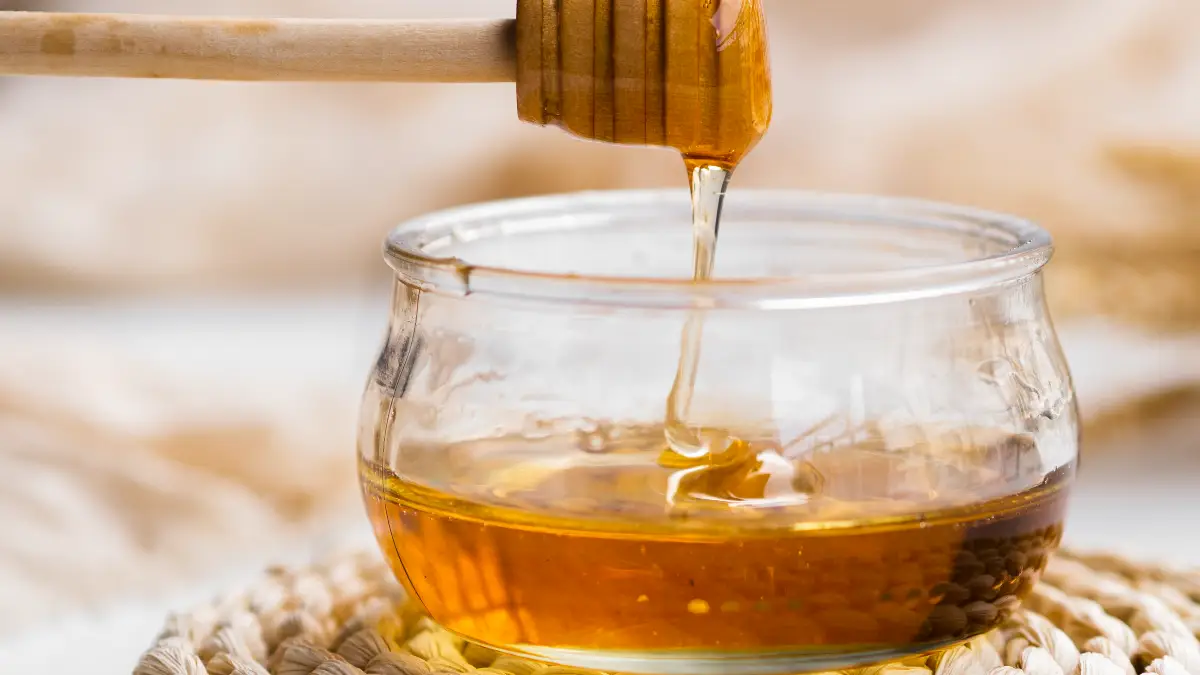
Honey truly lasts forever. Scientists have found 5,500-year-old honey in Egyptian tombs that’s still perfectly edible. No other food on earth can make this claim.
Why honey never spoils
Its low moisture content (below 20%), acidic pH (3-4.5), and natural hydrogen peroxide produced by bee enzymes. This creates an environment where no bacteria or microorganisms can survive.
Archaeologists have discovered edible honey in ancient Egyptian tombs and at archaeological sites worldwide. When pharaohs were buried with honey for the afterlife, they accidentally created the world’s longest food preservation experiment.
Nutrition that lasts forever
A tablespoon of honey contains 64 calories and valuable antioxidants like flavonoids and phenolic acids. It also provides small amounts of vitamins C and B, plus trace minerals.
But honey’s most impressive feature is its natural antibacterial properties, which help it heal wounds and fight infections.
How to store honey properly
Keep honey at room temperature (around 70°F) in glass jars or food-grade plastic containers. Store away from direct sunlight. Unlike other foods, honey doesn’t need oxygen absorbers or special packaging – its natural properties preserve it.
Don’t worry if your honey crystallizes – this is normal and doesn’t affect quality or safety. Simply warm the jar gently in warm water to return it to liquid form.
What preppers should know
Expert preppers recommend storing about 60 pounds of honey per person per year. Commercial filtered liquid honey lasts longest, though raw honey offers more health benefits but may crystallize faster.
In emergencies, honey serves as a sweetener, wound treatment, cough suppressant, quick energy source, and valuable trade item. You can substitute honey for sugar in recipes at half the amount (1/2 cup honey = 1 cup sugar).
Safety warning
Never give honey to infants under 1 year old due to the risk of infant botulism. Their digestive systems can’t handle the inactive bacterial spores sometimes found in honey.
2. Salt
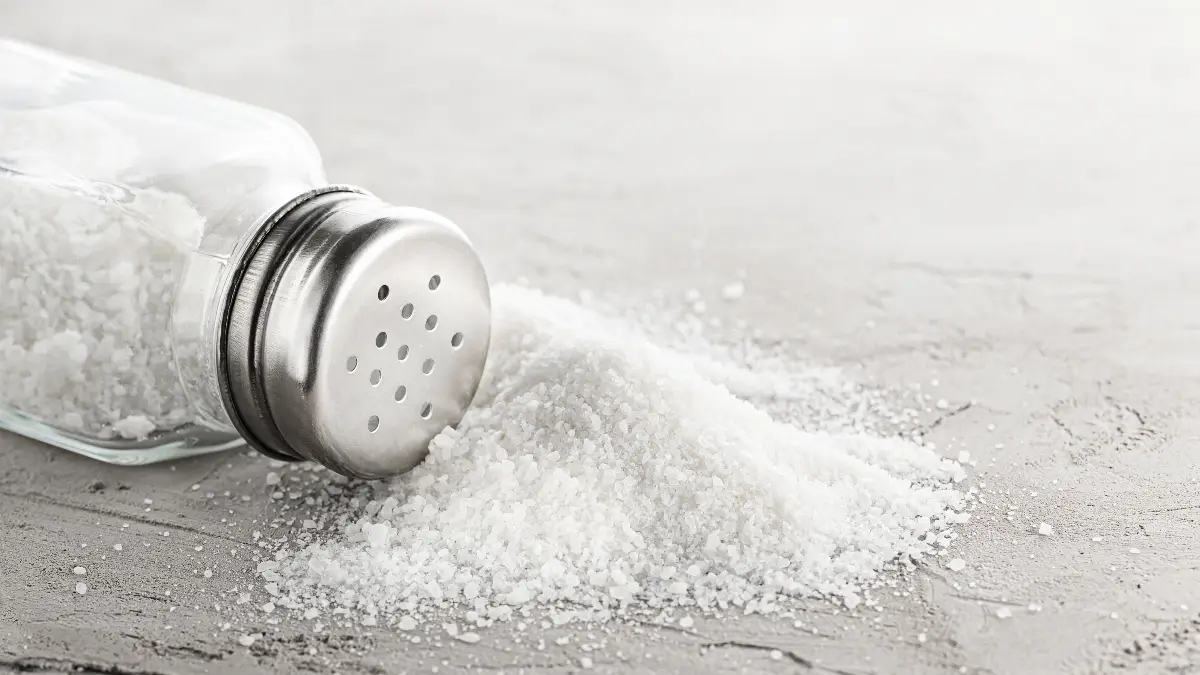
Pure salt has no expiration date. This simple mineral has preserved food for thousands of years and will stay good in your pantry forever. Iodized salt lasts 5+ years before the iodine degrades.
Why salt lasts forever
Salt is just sodium chloride (NaCl), a pure mineral that doesn’t break down. It removes moisture through osmosis, creating an environment where bacteria can’t survive. This same property makes it perfect for preserving other foods.
Throughout history, salt was so valuable that Roman soldiers were paid in it (where we get the word “salary”). Ancient civilizations traded salt like gold, and it shaped trade routes and economies.
Nutrition benefits
Salt provides essential electrolytes your body needs for nerve function and cellular health. Iodized salt adds thyroid support through added iodine, which helps prevent goiter and supports brain development.
Proper storage methods
Store salt in food-grade buckets, glass jars, or Mylar bags. Keep humidity below 15% to prevent clumping. Never use oxygen absorbers with salt – they’ll turn it into a rock-hard brick.
Prepper recommendations
Plan to store about 8 pounds of salt per person per year. Smart preppers keep multiple types: iodized for nutrition, sea salt for minerals, pickling salt for preservation, and kosher salt for curing meats.
In emergencies, salt serves many purposes beyond seasoning. Use it for:
- Preserving meat and vegetables
- Making rehydration solutions for treating diarrhea
- Cleaning wounds (diluted)
- Melting ice
- Killing weeds
Key points to remember
Salt has been valued throughout history for good reason. It’s essential for preserving other foods, making it a cornerstone of any prepper pantry. Store multiple types for different purposes, and never use oxygen absorbers with salt.
3. Sugar
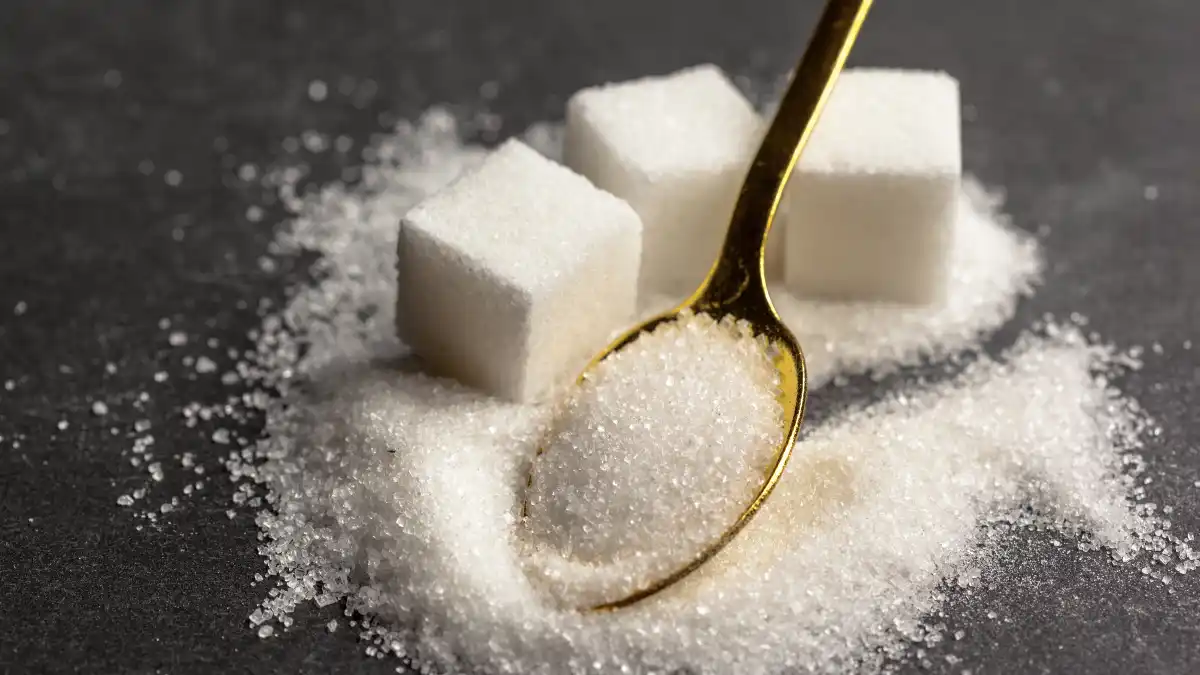
White sugar lasts indefinitely when kept dry. Brigham Young University studies found properly stored sugar still perfect after 30+ years. Unlike most foods, sugar never spoils – it just needs protection from moisture.
The science of sugar preservation
Sugar creates an environment hostile to bacteria and molds. Its high concentration draws water out of microorganisms through osmotic pressure, preventing them from growing. This same property makes sugar excellent for preserving fruits as jams and jellies.
People have grown sugar cane for about 8,000 years. Ancient civilizations discovered sugar’s preservative properties early and used it to extend food life and enhance flavors.
Nutritional value
A one-ounce serving of sugar provides about 110 calories of pure carbohydrates for quick energy. While sugar lacks vitamins and minerals, it makes bland emergency foods more palatable – a crucial morale factor during hard times.
Storage requirements
Keep sugar in food-grade buckets, Mylar bags, or glass jars. Maintain humidity below 60% to prevent clumping. Never use oxygen absorbers with sugar – they cause it to harden into a brick.
For best results, store at least 40 pounds of sugar per person per year. Brown sugar has a shorter shelf life (about 2 years) due to its higher moisture content from molasses.
Emergency uses
Beyond sweetening foods and drinks, sugar serves many emergency purposes:
- Preserving fruits as jam
- Making electrolyte solutions with salt
- Treating wound infections
- Boosting morale through comfort foods
Important considerations
Sugar remains chemically stable indefinitely when protected from moisture. Store away from strong-smelling items since sugar absorbs odors. During tough times, sweet foods become incredibly valuable for psychological comfort – everyone craves something sweet when times are hard.
4. White rice
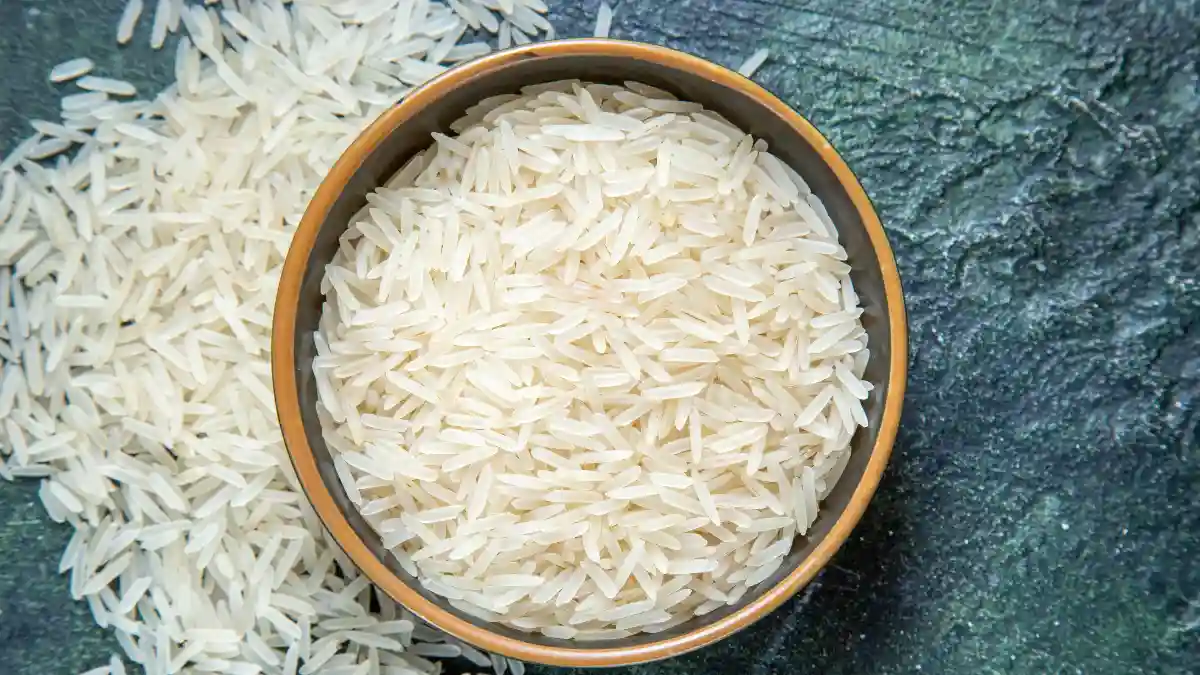
White rice properly stored can feed your family for 30+ years. Brigham Young University research confirmed rice stored with oxygen absorbers remained safe and nutritious for over three decades.
Why white rice lasts so long
The milling process removes the oily bran and germ layers that cause brown rice to spoil within months. This leaves just the starchy endosperm that stays stable for decades when kept dry and oxygen-free.
Archaeologists have found ancient rice in Chinese and Indian sites thousands of years old, showing how long this grain can last.
Nutritional profile
White rice packs about 1,700 calories per pound, making it an efficient energy source. Each cooked cup provides around 7 grams of protein and, when enriched, contains B vitamins and iron.
Storage requirements
For maximum shelf life:
- Pack rice in Mylar bags (3.5-5 mil thickness)
- Add oxygen absorbers (300-500cc per gallon)
- Seal and place in food-grade 5-gallon buckets
- Store at 40-70°F (basement temperature ideal)
Preppers typically store 240 pounds of rice per person per year. For easier rotation, pack in 1-gallon bags holding 6-7 pounds each rather than filling entire buckets.
Emergency uses
Rice serves as the foundation for countless meals. Use it for:
- Base for soups and stews
- Side dish with beans or protein
- Rice pudding for dessert
- Congee (rice porridge) for breakfast
- Paired with beans for complete protein
Critical information
Brown rice only lasts about 6 months due to oils in the bran that go rancid. White rice and beans together provide all essential amino acids your body needs. A 5-gallon bucket holds about 33 pounds of rice.
The oxygen absorbers not only prevent oxidation but also kill insect eggs – no freezing needed.
5. Dried beans and legumes
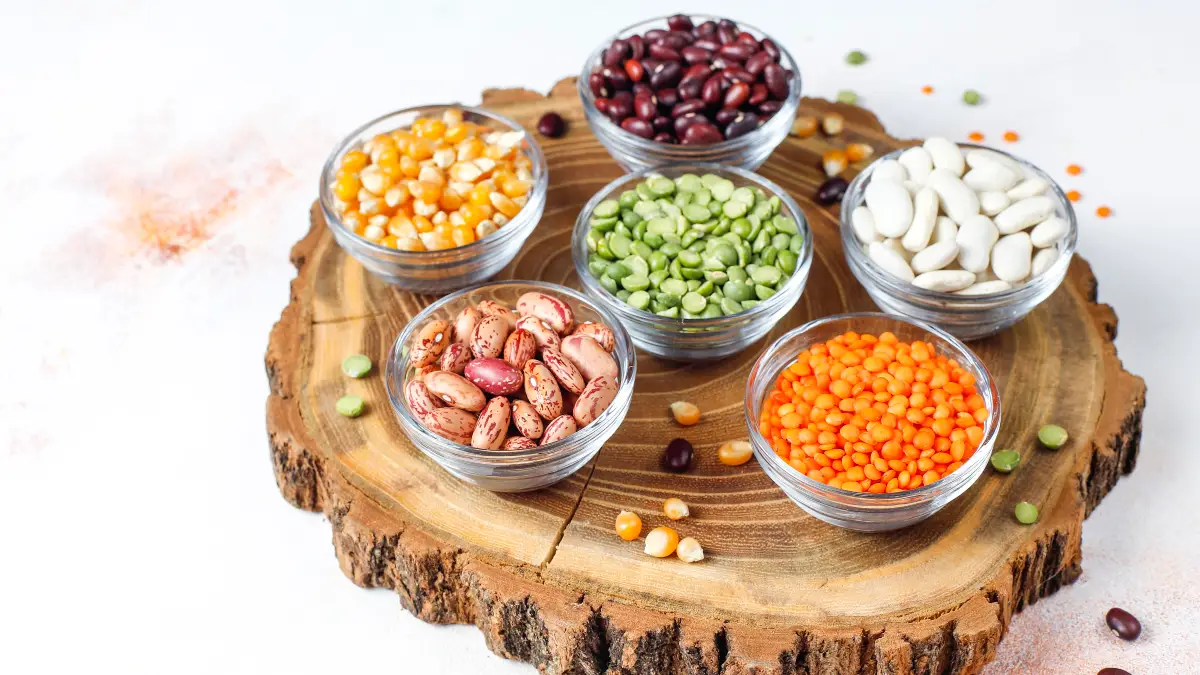
Dried beans remain viable for 30+ years when properly stored. BYU research found 30-year-old beans were still 80% acceptable for emergency use. This makes them one of the most valuable foods in your long-term storage plan.
Science behind bean longevity
Beans naturally contain very little moisture when properly dried. When stored without oxygen, insect eggs can’t hatch and oxidation can’t occur. Their hard seed coat also helps protect nutrients.
People worldwide have relied on dried beans for thousands of years. Archaeological discoveries show ancient civilizations stored beans for extended periods.
Nutritional powerhouse
Dried beans contain about 22% protein – the highest of any seed crop. They provide all essential amino acids except methionine (which grains supply). Beans also deliver high fiber, iron, magnesium, potassium, and folate.
Storage requirements
Store beans in Mylar bags with oxygen absorbers inside food-grade buckets. Use 2,000cc oxygen absorbers for a 5-gallon bucket (beans need more than rice due to air pockets between them). Keep at 40-70°F in a dark location.
Plan for about 120 pounds of beans per person per year. Store a variety including pinto, black, kidney, lentils, chickpeas, and split peas for dietary diversity.
Emergency applications
Beans require soaking overnight plus 2-4 hours of cooking, but offer incredible versatility:
- Soups and stews
- Chili
- Refried beans
- Hummus
- Bean sprouts
- Bean flour
Key considerations
Combine beans with rice or corn for complete protein. While vitamins degrade after about 5 years, the protein and mineral content remains stable for decades. Sprouting beans dramatically increases their vitamin C content. Always use more oxygen absorbers for beans than rice since they’re less densely packed.
6. White vinegar (distilled)

Distilled white vinegar lasts forever. Its high acidity makes it naturally self-preserving, so it never needs an expiration date.
Why vinegar never expires
White distilled vinegar contains 5% acetic acid with a pH of about 2.5. This acidic environment kills bacteria and prevents any new microbes from growing. As a fermented product, vinegar has already gone through its transformation process and remains stable.
Vinegar production dates back to 5000 BC. The Babylonians used it as a preservative and condiment. Every ancient civilization discovered vinegar’s preservative powers.
Nutritional profile
White vinegar contains essentially zero calories. Its 5% acetic acid provides antimicrobial properties useful for food preservation. Apple cider vinegar variants contain beneficial probiotics if unfiltered, but don’t last quite as long.
Storage guidelines
Keep vinegar in its original glass or plastic bottles. Store at 50-70°F in a dark cupboard. No oxygen absorbers or special packaging needed. Cloudiness, sediment, or “mother” formation (stringy substance) is harmless and doesn’t affect quality.
Most preppers store at least 1 gallon per household. White vinegar remains most stable long-term, while specialty vinegars have shorter (but still impressive) shelf lives.
Emergency uses
Beyond cooking, vinegar serves many purposes:
- Pickling and fermenting vegetables
- Making salad dressings
- Creating marinades
- Cleaning surfaces
- Disinfecting
- Laundry freshening
- Weed control
Important facts
Only white distilled vinegar lasts indefinitely. Apple cider and specialty vinegars last years but not forever. Vinegar is essential for food preservation through pickling. It serves multiple non-food purposes including cleaning, first aid, and pest control.
7. Soy sauce
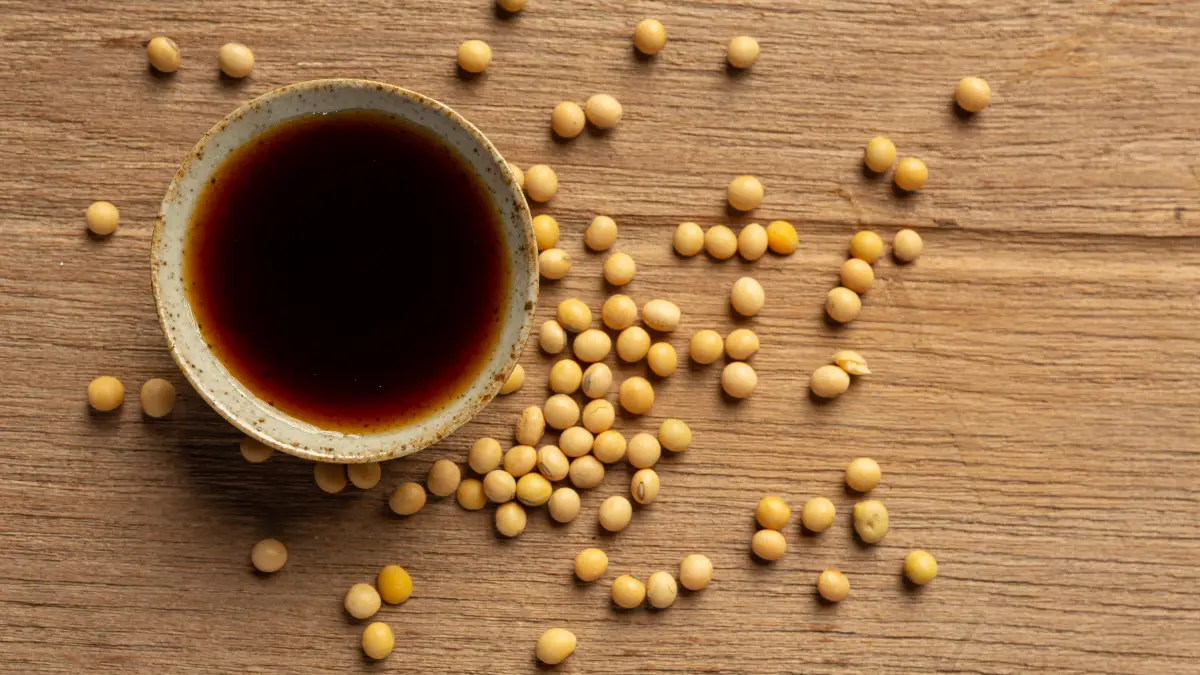
Unopened soy sauce lasts for decades. Once opened, it stays good for 2-3 years when refrigerated. Its high salt content and fermentation process create natural preservation.
Science of soy preservation
Soy sauce contains 14-18% sodium, which creates a hostile environment for bacteria. The traditional fermentation process produces compounds that further prevent spoilage.
This staple originated in China over 2,200 years ago. Traditional production involved fermenting soybeans, wheat, salt, and water for months to years – a process that naturally extended shelf life.
Nutritional aspects
Soy sauce contains high sodium (about 1,000mg per tablespoon) and provides umami flavor compounds. It contains trace proteins and minerals from fermentation but minimal calories.
Storage requirements
Keep unopened soy sauce in its original bottle (glass or plastic). Store in a cool, dry place before opening. After opening, refrigerate for best quality. The color naturally darkens over time, which is harmless.
Preppers should store several bottles, including both regular and low-sodium varieties if desired.
Emergency applications
Soy sauce transforms bland emergency foods into flavorful meals:
- Stir-fries
- Marinades for meat or tofu
- Soup flavoring
- Rice dishes
- Sauce base (combined with cornstarch)
Key considerations
Soy sauce dramatically improves the taste of bland emergency foods. It’s an essential ingredient for Asian cuisine. Low-sodium varieties require refrigeration after opening to maintain quality. While flavor may mellow over time, properly stored soy sauce remains safe for years beyond stated “best by” dates.
8. Pure maple syrup
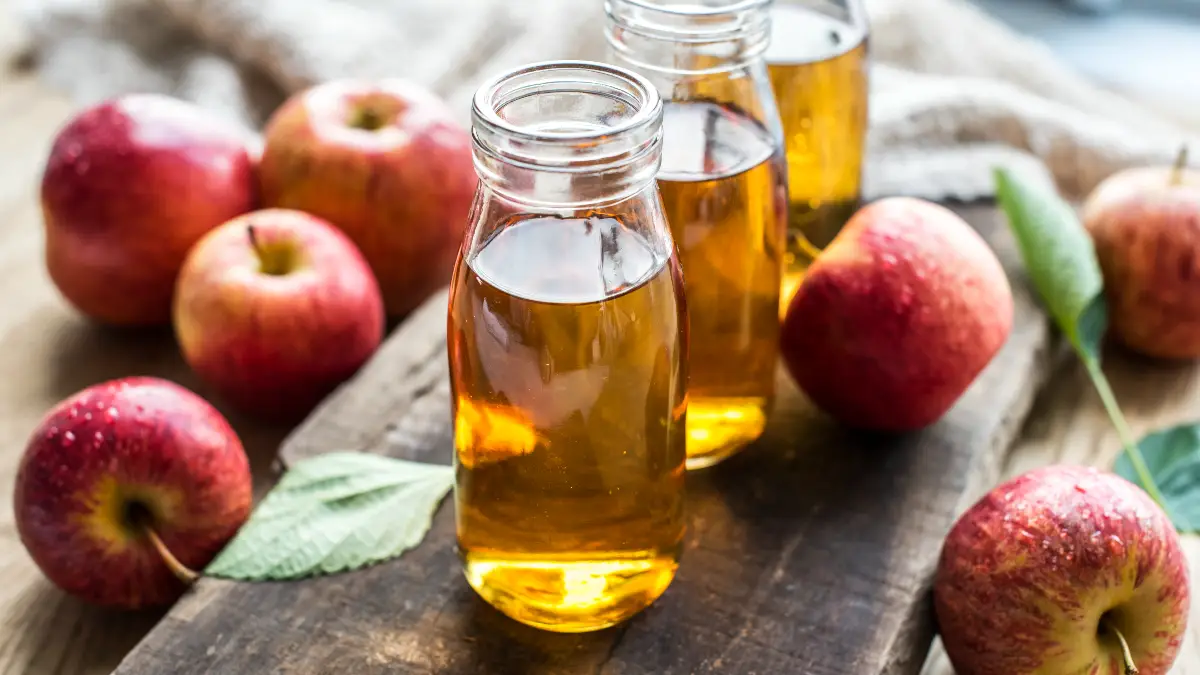
Pure maple syrup lasts indefinitely when unopened. Once opened, refrigerate it for up to a year. This natural sweetener offers unique flavor and nutrition that processed substitutes can’t match.
Why maple syrup lasts so long
With a sugar concentration around 66%, maple syrup creates an environment where bacteria can’t thrive. It also contains natural antimicrobial compounds. Even if mold appears on the surface, you can salvage the syrup by boiling it.
Native Americans introduced European settlers to maple syrup centuries ago. The traditional preservation method of boiling sap concentrated both flavor and extended shelf life.
Nutritional benefits
Each tablespoon provides 52 calories plus substantial manganese (33% of daily value), zinc, calcium, potassium, and over 24 antioxidant compounds. Maple syrup has a lower glycemic index than refined sugar, making blood sugar spikes less dramatic.
Storage guidelines
Glass bottles work best for storage. Keep unopened syrup in a cool, dark pantry. Refrigerate after opening to prevent mold growth. The airtight seal prevents contamination.
Preppers typically store 1-2 gallons per family per year. Always buy 100% pure maple syrup – imitation syrups don’t have the same preservation properties. Darker, more robust grades generally last longest.
Emergency uses
Beyond pancakes, use maple syrup for:
- Sweetening oatmeal
- Baking (reduce recipe liquid slightly)
- Glazing meats
- Making marinades
- Sugar substitute
Important considerations
Only 100% pure maple syrup lasts indefinitely – imitation syrups don’t share this property. Crystallization is normal and doesn’t affect quality – just warm gently to dissolve crystals.
Unlike refined sugar, maple syrup contains actual nutrients. If mold appears on the surface, you can boil the syrup, skim off the mold, and safely use what remains.
9. Cornstarch
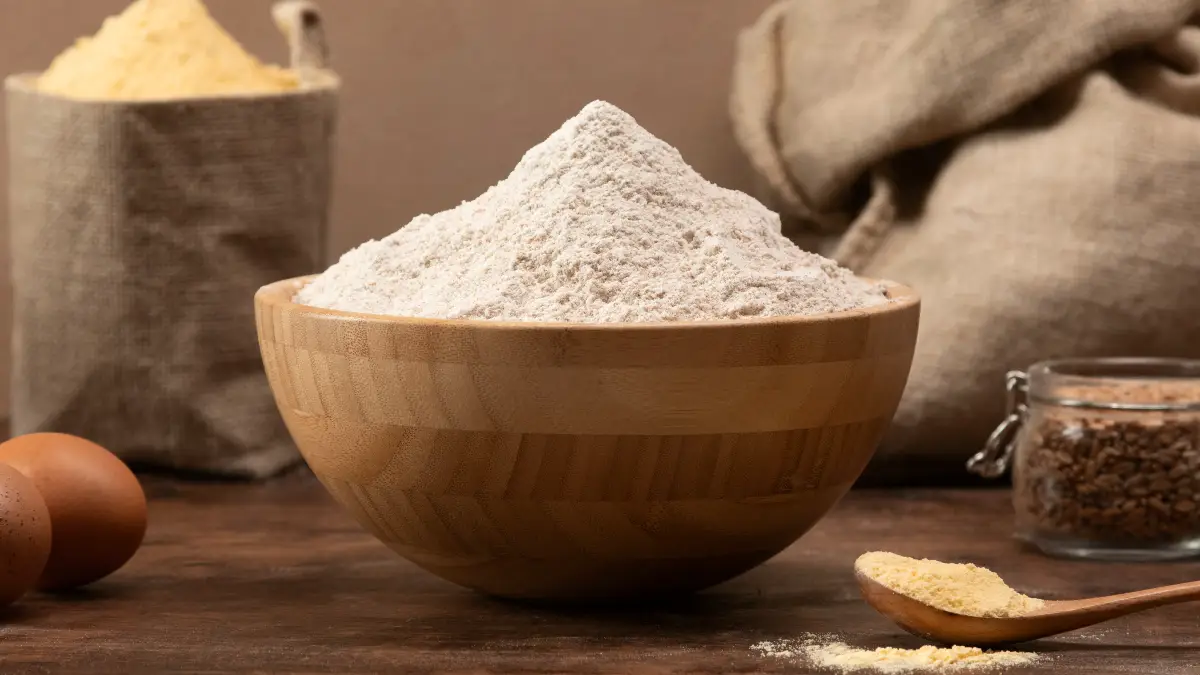
Cornstarch lasts indefinitely when kept dry. This pure starch never loses its thickening power over time, making it valuable for long-term food storage.
Why cornstarch never expires
Cornstarch contains virtually no moisture and has a stable chemical structure. With proper storage, it maintains its potency indefinitely. Unlike whole grains, it contains no oils that can go rancid.
Cornstarch was invented in the 1840s and quickly became a household staple for thickening sauces and gravies.
Nutritional profile
Cornstarch provides about 381 calories per 100 grams of pure carbohydrates. It’s gluten-free but offers minimal nutritional value beyond energy. Its value lies in its cooking utility rather than nutrition.
Storage requirements
Store cornstarch in food-grade containers, glass jars, or Mylar bags. Keep humidity below 60% and ensure it stays absolutely dry. Don’t use oxygen absorbers with cornstarch – moisture control matters more than oxygen exposure.
Most preppers store 5-10 pounds per household. Transfer cornstarch from its paper packaging to airtight containers for long-term storage.
Emergency applications
Cornstarch serves multiple purposes:
- Thickening sauces, soups, and gravies
- Creating tender textures in baking
- Coating foods for frying
- Substituting for talcum powder
- Making dry shampoo
- Creating homemade deodorant
Key facts to remember
Keep cornstarch absolutely dry to prevent clumping and mold. One tablespoon of cornstarch equals two tablespoons of flour for thickening power. Cornstarch absorbs odors, so store it away from strong-smelling foods.
Beyond cooking, it serves multiple household purposes in emergencies.
10. Baking soda
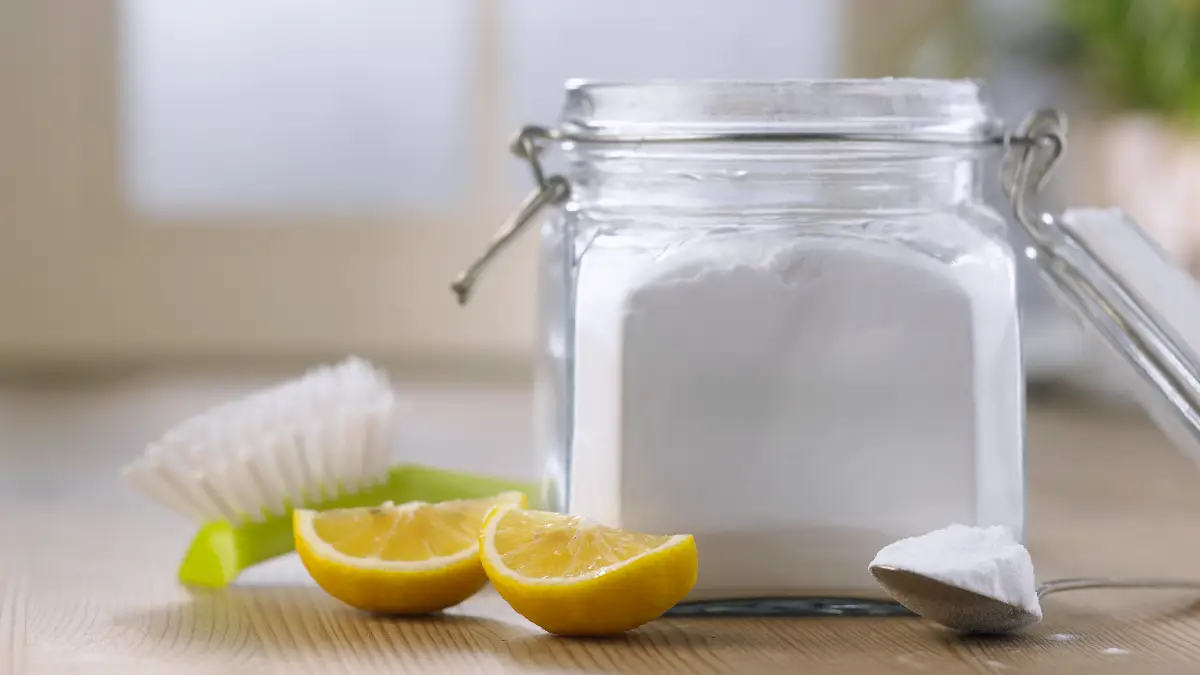
Baking soda never expires when properly stored. While manufacturers recommend using it within 3 years for maximum leavening power, the sodium bicarbonate itself remains chemically stable forever.
Science behind baking soda’s longevity
Baking soda (sodium bicarbonate) is a pure mineral compound mined from the earth. This stable substance doesn’t break down or degrade over time – only its leavening power gradually diminishes.
This versatile powder has been used for thousands of years. Ancient Egyptians used natural sodium bicarbonate deposits for mummification and cleaning.
Nutritional aspects
Baking soda isn’t nutritionally significant but contains high sodium. Its alkaline nature helps balance pH and provides relief for acid indigestion. Some people take small amounts as a digestive aid.
Storage guidelines
Keep baking soda in airtight glass jars, food-grade buckets, #10 cans, or Mylar bags. Store in cool, dry conditions. Baking soda protects itself by absorbing both moisture and odors.
Plan to store about 10 pounds per person per year – 1 pound for baking and 9 pounds for cleaning, hygiene, and medical uses. To test potency before baking, mix a small amount with vinegar – it should fizz vigorously.
Emergency applications
Baking soda might be the most versatile item in your storage:
- Leavening agent for baking
- All-purpose cleaner
- Toothpaste (mixed with salt)
- Deodorant
- Dry shampoo
- Heartburn relief
- Insect bite treatment
- Fire extinguisher for grease fires
- Drain cleaner
Critical considerations
Even if baking soda loses some leavening power for baking, it remains useful for countless other purposes. No other product offers such versatility for cleaning, hygiene, and medical applications.
You can’t easily make baking soda at home, so store plenty. Its low cost and multiple uses make it an excellent barter item during emergencies.
11. Dried pasta

Store dried pasta properly and it will feed your family for decades. Studies by Brigham Young University confirmed that pasta stored for 30 years remained edible and acceptable for emergency use.
The science of pasta preservation
Dried pasta contains just 10-12% moisture and consists of simple ingredients – usually just semolina flour and water. When stored without oxygen, it maintains its nutrition and safety for decades.
This preservation technique dates back to 13th century Italy. Pasta was developed as a way to preserve wheat in a stable form that wouldn’t spoil during long voyages.
Nutritional benefits
Each 2-ounce serving provides about 200 calories, with 75% coming from carbohydrates. Pasta contains very little fat, making it stable for long-term storage. Enriched varieties offer B vitamins, while whole wheat pasta provides about 6 grams of fiber per serving.
Storage recommendations
For maximum shelf life:
- Pack in Mylar bags with oxygen absorbers (300-500cc per gallon)
- Seal inside food-grade buckets with gamma lids
- Store in cool conditions (50-70°F)
- Keep in a dry location away from light
The University of Georgia Extension recommends storing about 42 pounds of dried pasta per person per year. Include different varieties like spaghetti, macaroni, and other shapes for meal variety.
Emergency cooking
Pasta shines during emergencies because it:
- Requires only boiling water
- Cooks quickly (8-12 minutes)
- Pairs well with canned goods and sauces
- Serves as a versatile base for countless meals
- Can cook with reduced water in emergency situations
Important considerations
While pasta quality may decline over decades, it remains safe and edible. Egg pasta has a much shorter shelf life due to its fat content. In emergencies, you can cook pasta with less water than normally called for – just enough to cover it completely.
12. Powdered milk
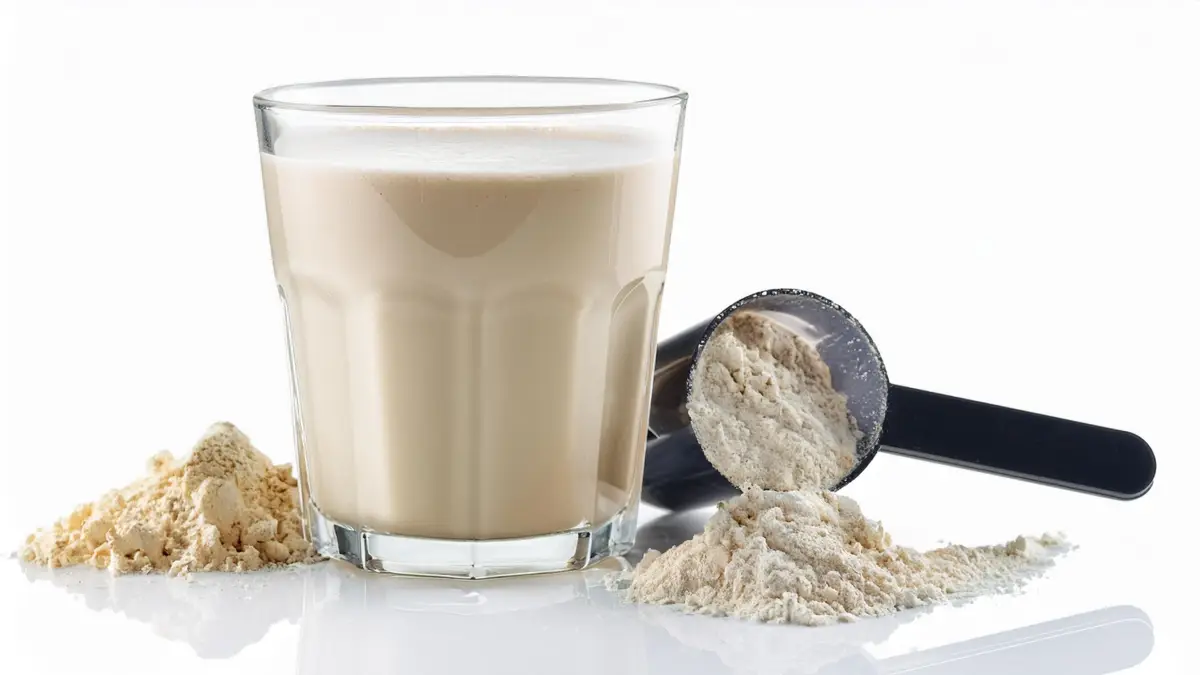
Nonfat dry milk lasts 20+ years when stored properly. Freeze-dried varieties packaged with nitrogen can last 25 years, providing crucial calcium and protein when fresh dairy isn’t available.
How milk powder achieves longevity
Two processes make long-term storage possible: dehydration removes moisture, and removing fat prevents spoilage (fat turns rancid). Oxygen-free packaging prevents oxidation and extends shelf life.
Powdered milk was invented in 1832 and became a critical ration during World War II. It later became a staple in the space program for its long shelf life and nutritional profile.
Nutritional powerhouse
Powdered milk provides 8-9 grams of protein per serving, plus high calcium content. Most varieties are fortified with vitamins A and D, and also contain phosphorus, riboflavin, and other B vitamins. A cup of reconstituted milk contains about 86 calories.
Storage guidelines
For longest life, store powdered milk in:
- #10 cans (commercial options)
- Mylar bags with oxygen absorbers
- Food-grade buckets with tight-fitting lids
- Cool temperatures (50-60°F is optimal)
- Protected from heat and light
Serious preppers store about 75 pounds of powdered milk per person per year. Remember that nonfat milk powder lasts much longer than whole milk powder. Once opened, use within 6-12 months for best quality.
Emergency uses
To use powdered milk:
- Reconstitute with water (typically 3 tablespoons powder + 1 cup water)
- Use in baking and cooking
- Make simple cheese, yogurt, or butter
- Chill reconstituted milk for improved taste
Key facts to remember
Nonfat dried milk lasts 20+ years, while whole milk powder only lasts 2-3 years due to its fat content. Proper packaging with nitrogen or oxygen absorbers is essential. Once opened, the milk powder begins to degrade faster. Add extra powder to recipes for protein and calcium boosts when other sources are unavailable.
13. Instant coffee
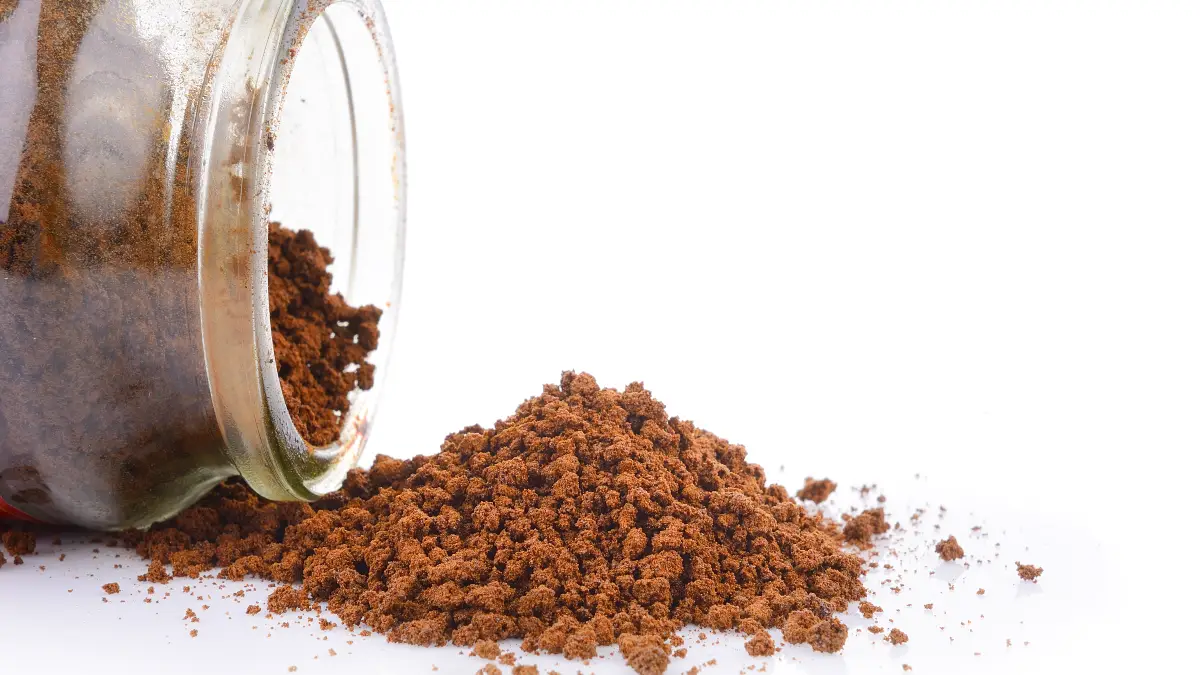
Freeze-dried instant coffee can last up to 25 years when properly stored with oxygen absorbers. For many, this makes it an essential part of emergency preparations.
Science behind coffee preservation
Freeze-drying removes virtually all moisture from coffee, while vacuum sealing prevents oxidation. The caffeine itself is extremely stable, maintaining its potency for decades.
Instant coffee was invented around 1890 but was perfected for military rations during WWII. It later became a staple for astronauts who needed compact, stable foods.
Nutritional aspects
Each serving contains about 60-80mg of caffeine plus antioxidants. Black coffee has essentially no calories. The main benefit is mental alertness from caffeine, which can be crucial during emergency situations.
Storage requirements
Store instant coffee in:
- Original sealed containers
- Glass jars with airtight lids
- Mylar bags with oxygen absorbers
- Cool conditions (below 70°F)
- Dry, dark location
The amount to store depends on your consumption habits. Nitrogen-sealed Mylar pouches offer the longest shelf life. Many preppers also keep individual packets in bug-out bags.
Emergency applications
During emergencies, instant coffee serves multiple purposes:
- Quick energy and alertness (add 1-2 teaspoons to hot or cold water)
- Baking ingredient
- Dessert flavoring
- Meat rub component
- Critical morale booster
Important considerations
Freeze-dried coffee lasts significantly longer than spray-dried varieties. Once opened, coffee is best used within 12-18 months for optimal flavor. For people with caffeine dependence, coffee can prevent withdrawal headaches and fatigue during emergencies. Coffee has extremely high barter value during crises – almost everyone wants it.
14. Hard liquor

Unopened hard liquor (80+ proof) lasts indefinitely. High-proof spirits stored in sealed bottles will remain safe and potent for decades or longer, with only slight flavor changes.
Why spirits last forever
The high alcohol content (40%+ ABV) creates an environment where bacteria and microorganisms cannot grow. The distillation process itself creates a shelf-stable product that resists degradation.
Distillation was invented around 800 AD. Early explorers used spirits as preservation methods for medicines. Some ancient spirits found in shipwrecks remain drinkable centuries later.
Nutritional profile
A 1.5-ounce shot contains approximately 100 calories but no significant nutritional value beyond energy. Ethanol provides about 7 calories per gram.
Storage guidelines
For maximum shelf life:
- Keep in original glass bottles (dark glass preferred)
- Store at 55-70°F
- Position bottles upright (especially if cork-sealed)
- Protect from sunlight
- Avoid temperature fluctuations
Most preppers store 1-2 bottles per person minimum. Prioritize versatile options like vodka, whiskey, rum, and high-proof grain alcohol (Everclear). Avoid cream liqueurs, which have limited shelf lives.
Emergency uses beyond drinking
Hard liquor serves many practical purposes:
- Disinfectant for wounds and medical equipment
- Fire starter
- Pain relief
- Wound antiseptic
- Base for medicinal tinctures
- Valuable trade/barter item
- Morale booster
Key considerations
Only high-proof spirits (80 proof/40% alcohol or higher) last indefinitely. Cream liqueurs and lower-proof options have limited shelf lives. Vodka is most versatile for medicinal and disinfectant uses. Store bottles upright to prevent cork degradation. During crises, alcohol has extremely high barter value.
15. Pure vanilla extract
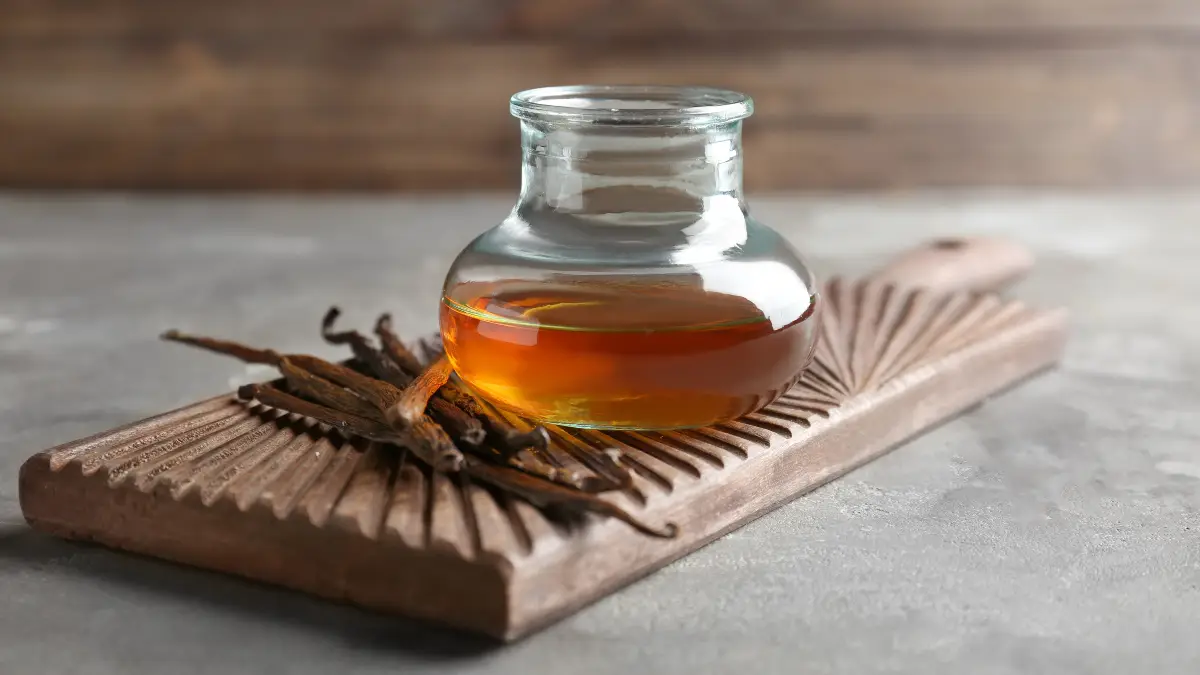
Pure vanilla extract lasts indefinitely thanks to its high alcohol content. This flavor enhancer adds warmth and complexity to bland emergency foods for decades.
Science of vanilla preservation
Pure vanilla extract contains 35-40% alcohol, which inhibits all microbial growth. This alcohol base preserves the vanilla compounds indefinitely.
The Aztecs first used vanilla over 500 years ago. Europeans adopted it in the 1500s, and the alcohol extraction method became the traditional way to preserve vanilla’s delicate flavors.
Nutritional aspects
Vanilla extract contains about 12 calories per tablespoon. It provides trace B vitamins and antioxidants from vanillin, but serves primarily as flavoring rather than nutrition.
Storage guidelines
Store vanilla extract in:
- Dark glass bottles with tight lids
- Cool room temperature
- No refrigeration needed
- No oxygen absorbers required
Most families need about 4-8 ounces per year. Always buy pure extract, not imitation (which only lasts 2-3 years). You can make your own by soaking vanilla beans in vodka, which costs a fraction of store-bought extract.
Emergency applications
During emergencies, vanilla extract serves as:
- Baking flavoring
- Dessert enhancer
- Beverage flavoring
- Homemade syrup ingredient
- Oatmeal flavoring
- Morale-boosting taste for bland storage foods
Critical facts
Must be PURE extract, not imitation. The alcohol content (minimum 35%) is what preserves it. You can make your own for a fraction of the cost of commercial products. Even small amounts can transform bland emergency foods into more enjoyable meals, making it valuable for psychological well-being during crises.
16. White flour
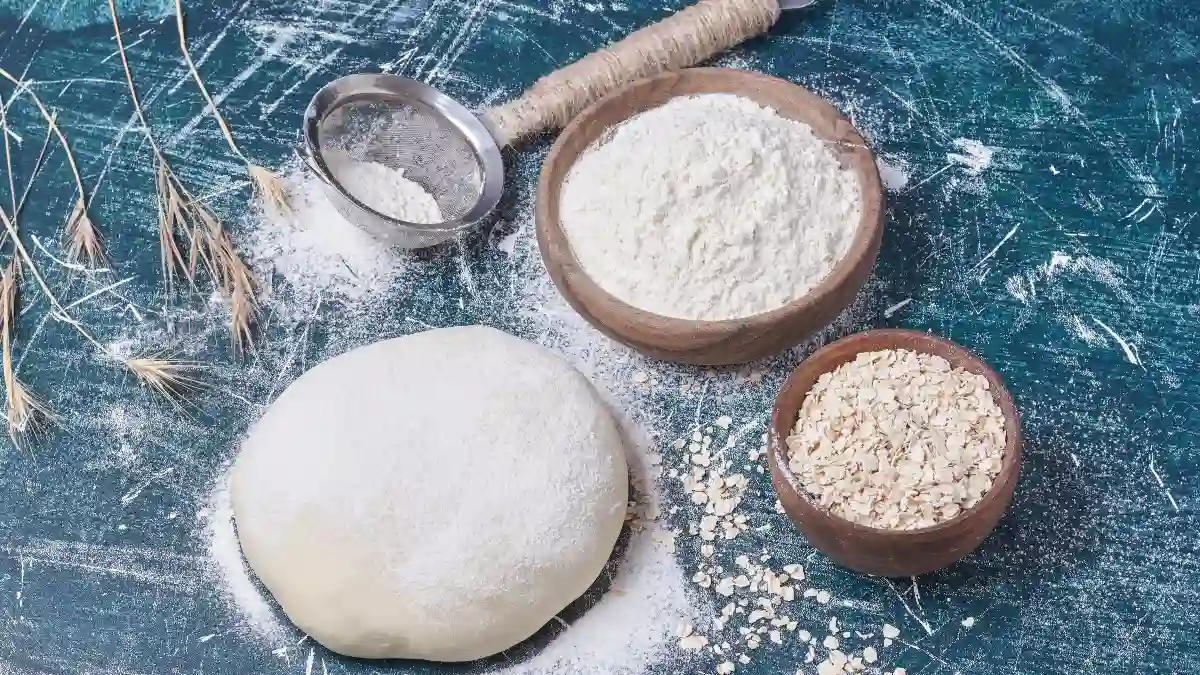
White flour lasts 10-30 years when properly stored. BYU research confirmed 28-year-old white flour remained usable for emergency purposes.
Science behind flour longevity
During processing, the oily bran and germ are removed, leaving only the starchy endosperm. This eliminates the parts that go rancid quickly. When stored without oxygen, flour can last for decades.
Milling technology dates back thousands of years, but refined white flour became common in the 19th century, partly because of its improved shelf life.
Nutritional profile
Each cup provides about 455 calories, mostly from carbohydrates. Commercial flour is typically enriched with B vitamins and iron to replace nutrients lost during processing. It contains less fiber than whole wheat flour.
Storage requirements
For maximum shelf life:
- Pack in Mylar bags with oxygen absorbers (300-500cc per gallon)
- Seal in food-grade buckets
- Store at 40-70°F
- Keep in cool, dark location
The amount to store depends on your baking frequency. Remember that whole wheat flour only lasts about 6 months due to oils in the bran. White flour must be stored in airtight containers with oxygen absorbers for long-term storage.
Emergency uses
Flour serves as the foundation for many foods:
- Bread
- Biscuits
- Pancakes
- Homemade pasta
- Thickening agent
- Dumplings
- Flatbreads
Important facts
Whole wheat flour only lasts about 6 months before the oils go rancid. Oxygen absorbers are essential for proper storage. Temperature significantly impacts shelf life – cool storage extends usable life dramatically. BYU studies confirmed 28-year-old properly stored white flour remained usable for emergency situations.
17. Dried oats
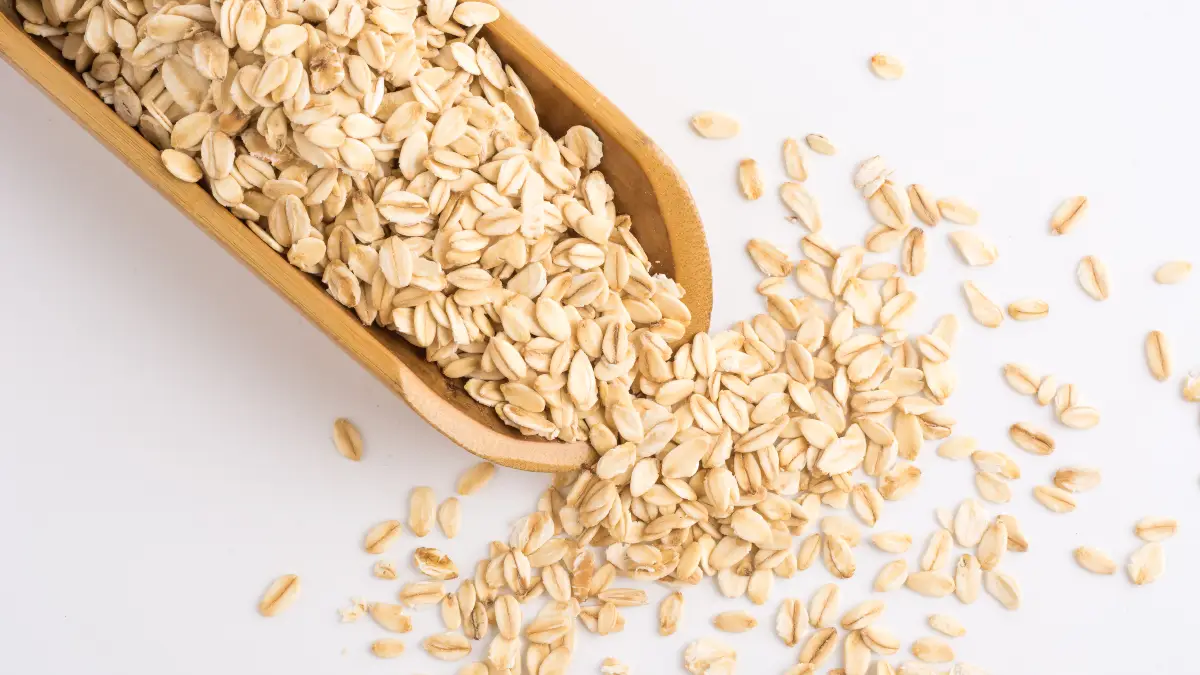
Oats remain viable for 30+ years when properly stored. BYU food storage research confirmed oats maintain acceptable quality for decades.
How oats achieve longevity
Dried oats contain very little moisture when properly packaged. Oxygen absorbers prevent oxidation of the small amount of oils present. This combination allows for multi-decade storage.
Humans have cultivated oats for over 12,000 years. Traditional drying and storage methods were developed to preserve this valuable grain through winters and potential famines.
Nutritional powerhouse
Each serving provides about 150 calories plus 4 grams of fiber and 5 grams of protein. Oats contain iron, magnesium, B vitamins, and heart-healthy beta-glucan, which helps lower cholesterol.
Storage guidelines
Store oats in:
- Mylar bags with oxygen absorbers (300-500cc per gallon)
- Food-grade buckets with secure lids
- Cool, dry conditions
- Sealed packaging to prevent moisture infiltration
Regular rolled oats store best long-term. Steel-cut oats also store well, while instant oats are convenient but have shorter shelf lives.
Emergency applications
Oats require minimal preparation:
- Hot cereal (just add hot water)
- Overnight oats (soak in water)
- Baking ingredient
- Granola base
- Energy bar component
- Flour substitute (grind to powder)
- Meat extender
Key facts to remember
Regular rolled oats last longer than instant varieties. The high fiber content aids digestion during emergency situations when diets may be limited. Oats can be ground into flour for baking when wheat flour is unavailable.
They require minimal cooking – just 5 minutes with hot water – making them ideal when fuel is limited.
18. Pemmican
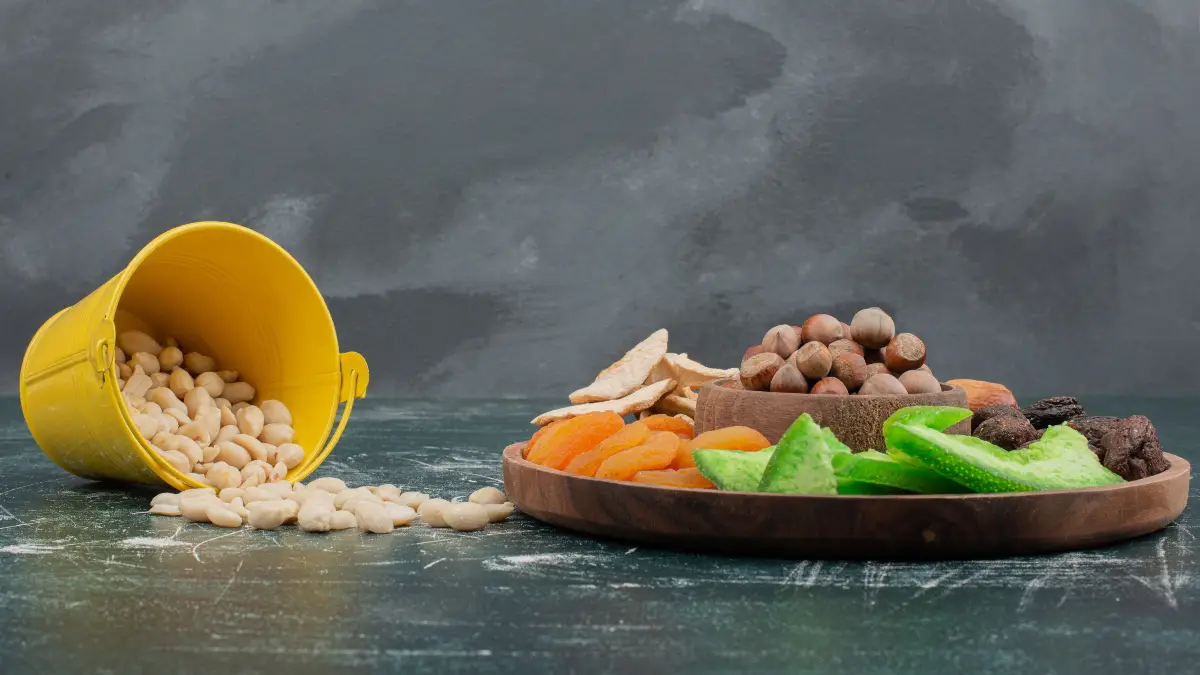
Pemmican can last for decades when properly made. Traditional recipes created by Native Americans remained edible for many years, while modern versions last 10+ years under proper conditions.
Science of pemmican preservation
Dried meat (jerky), rendered fat, and sometimes dried berries. The extremely low moisture content and fat coating prevents oxidation and spoilage.
This food was invented by Native Americans as a way to preserve meat. Lewis and Clark relied on pemmican during their expedition, as did fur trappers and Arctic explorers who needed concentrated nutrition that wouldn’t spoil.
Nutritional density
Pemmican is incredibly calorie-dense, providing 500+ calories per 4-ounce serving. It delivers high protein and fat content, plus some carbohydrates if berries are included. It represents one of the few complete nutrition foods in a single package.
Storage requirements
Store pemmican in:
- Cool, dark, dry location
- Vacuum-sealed packaging for modern versions
- Traditional storage used leather or rawhide bags
Many preppers make their own following traditional methods, though specialty suppliers also offer commercially-made versions. Pemmican’s compact nutrition makes it ideal for bug-out bags.
Emergency uses
Pemmican requires no preparation:
- Ready to eat immediately
- No cooking required
- Concentrated energy source
- Can be eaten as is or added to soups/stews
Critical considerations
Pemmican is one of the few complete survival foods containing protein, fat, and (if berries are included) carbohydrates. It’s extremely calorie-dense for its weight, making it efficient for travel. The traditional Native American preservation technique has proven itself over centuries. It’s ideal for bug-out bags since it requires no cooking or preparation.
19. Corn syrup
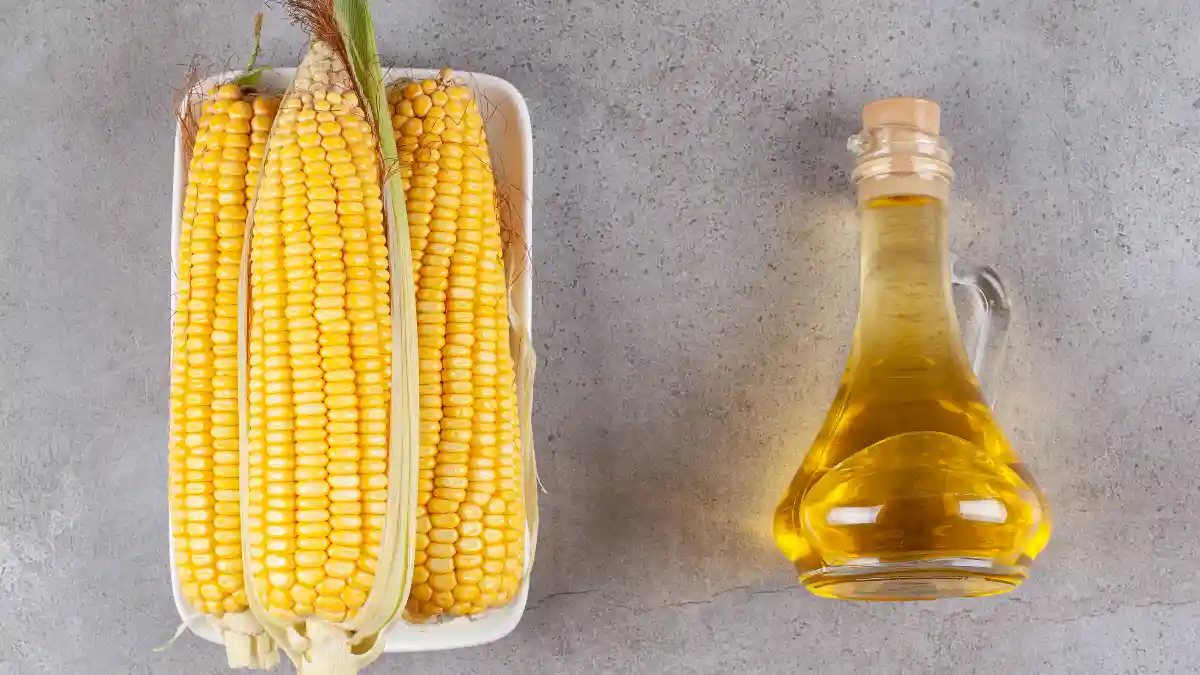
Unopened corn syrup lasts indefinitely. Similar to honey, its high sugar concentration prevents microbial growth, allowing it to remain shelf-stable for decades.
Science behind corn syrup preservation
Corn syrup creates an inhospitable environment for microorganisms due to its extremely high sugar concentration. It works through the same preservation mechanism as honey.
Commercial corn syrup production began in the early 1900s, though glucose syrups have been used much longer in various forms.
Nutritional profile
Each tablespoon contains about 60 calories from pure carbohydrates. Corn syrup provides no significant vitamins or minerals, serving primarily as an energy source.
Storage guidelines
Keep corn syrup in:
- Original sealed container
- Cool, dark location
- Room temperature is acceptable
- No special packaging required
Corn syrup is useful for baking and candy-making, though it’s generally less versatile than honey or sugar for overall prepper use.
Emergency applications
During emergencies, corn syrup serves as:
- Baking ingredient
- Candy-making base
- Pecan pie essential
- Sweetener
- Anti-crystallization agent in recipes
Important considerations
Corn syrup shares similar preservation properties with honey. It prevents crystallization in recipes like candy and frozen desserts. While less versatile than honey, it still offers indefinite shelf life. The syrup must remain sealed and properly stored to maintain its longevity.
20. Ghee
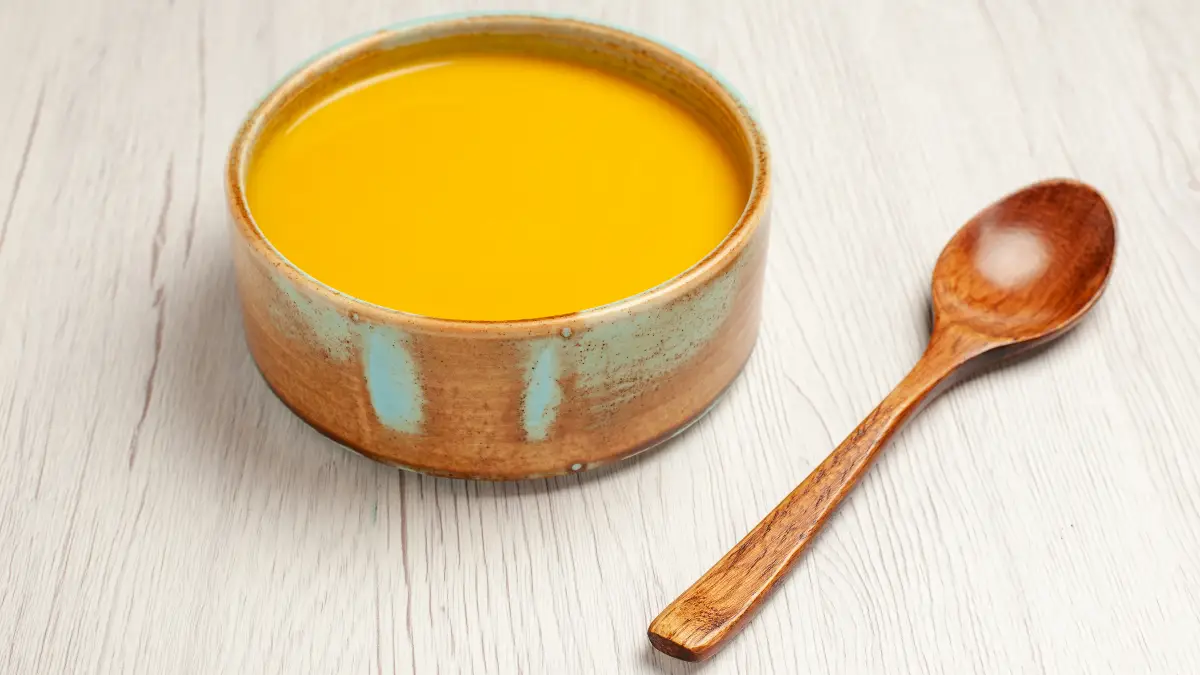
Ghee lasts 12+ months unopened and 3-12 months after opening. While this is shorter than most foods on our list, it’s dramatically longer than regular butter, which spoils within weeks.
How ghee achieves stability
During the clarification process, milk solids and water are removed, leaving only pure butterfat. This eliminates the components that cause spoilage. The process also removes lactose.
In India, ghee has been traditionally stored at room temperature for months to years. It has been used in Ayurvedic medicine for millennia and was developed partly as a preservation method.
Nutritional benefits
Each tablespoon provides about 112 calories, primarily from saturated fat. Ghee contains fat-soluble vitamins (A, D, E, K) and CLA (conjugated linoleic acid), which may have health benefits.
Storage recommendations
Store ghee in:
- Airtight container
- Cool, dark location
- No refrigeration needed if pure
- Protected from moisture contamination
While ghee has a shorter shelf life than most items on this list, it’s far more stable than regular butter, which only lasts weeks rather than months.
Emergency uses
Ghee serves multiple cooking purposes:
- Cooking oil
- Butter substitute
- High-heat cooking (485°F smoke point)
- Spreading on bread
- Baking ingredient
Key points
Ghee is much more stable than regular butter (months vs. weeks). Being lactose-free, it works for people with dairy sensitivities. Its high smoke point makes it ideal for cooking at high temperatures. While its shelf life is shorter than most items on our list, it’s still impressively long for a fat product.
21. Coconut oil
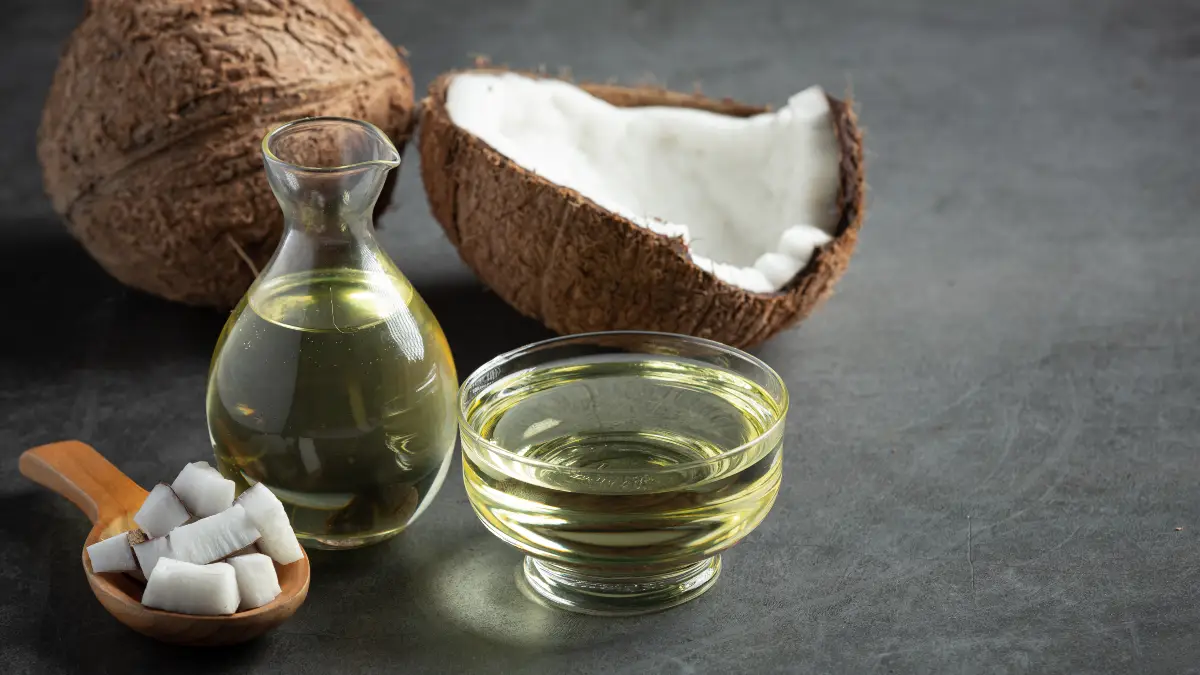
Virgin coconut oil lasts 3-5 years when properly stored. This makes it one of the longest-lasting cooking fats available, far outlasting most vegetable oils.
Science of coconut oil stability
Coconut oil’s high saturated fat content (about 90%) resists oxidation and rancidity. Virgin, unrefined oil contains natural antioxidants that extend shelf life. The lauric acid provides natural antimicrobial properties.
Pacific Islanders have used coconut oil for preservation for centuries. Tropical regions traditionally relied on it as a stable cooking fat that wouldn’t spoil quickly in warm climates.
Nutritional profile
Each tablespoon provides about 120 calories, primarily from medium-chain triglycerides (MCTs). Coconut oil contains lauric acid and vitamin E. Its 90% saturated fat content makes it controversial nutritionally but perfect for long-term stability.
Storage requirements
Store coconut oil in:
- Cool, dark place
- Airtight container
- Away from heat sources
- Original container or glass jar
Coconut oil solidifies at temperatures below 76°F, which is normal and harmless. Virgin/unrefined oil lasts longer than refined varieties.
Emergency applications
Coconut oil serves many purposes:
- Cooking oil
- Baking ingredient
- Skin care product
- Wound care (antimicrobial)
- Fuel for oil lamps
- Lubricant for tools and equipment
Important considerations
Coconut oil naturally solidifies at room temperature, which doesn’t affect quality. Virgin/unrefined oil lasts longer than refined varieties. Beyond cooking, it has many non-food uses in emergencies. Compared to other vegetable oils (which typically go rancid within 6-12 months), coconut oil’s 3-5 year shelf life is impressive.
22. Dried potato flakes
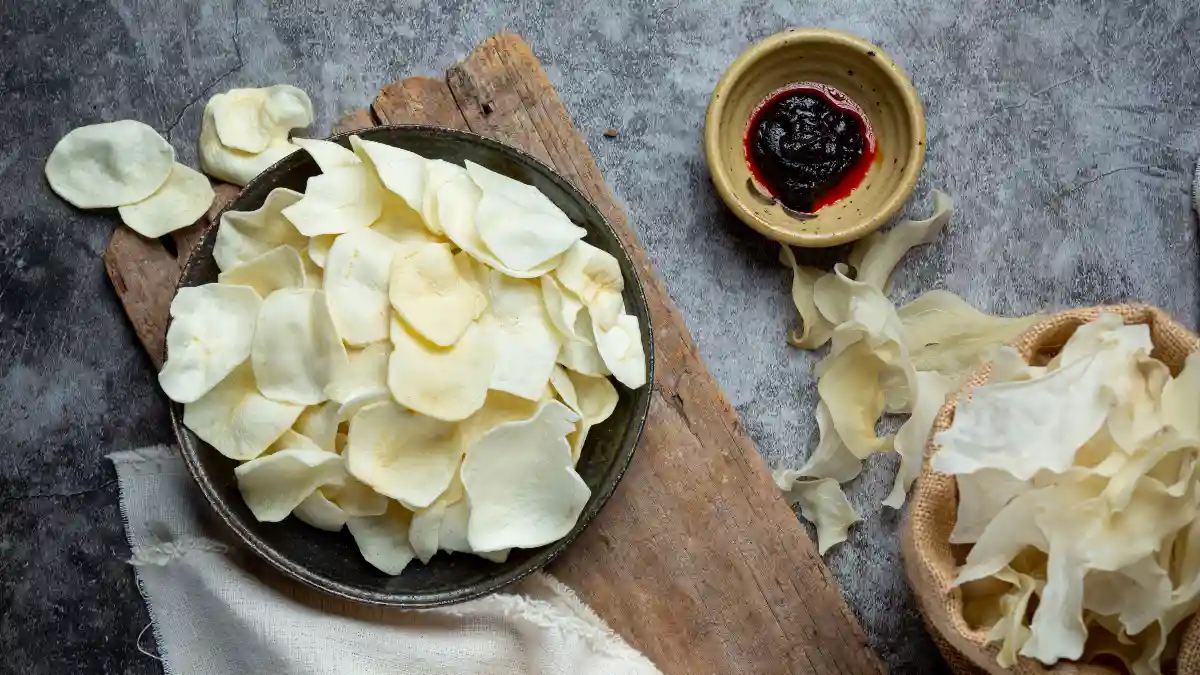
Dried potato flakes remain viable for 30+ years when properly stored. BYU research confirmed their long-term stability, making them a prepper pantry staple.
Science behind potato preservation
Dehydration removes nearly all moisture, while oxygen absorbers prevent oxidation. The starch structure remains stable for decades when protected from humidity and oxygen.
Dehydrated potatoes were developed for military use during World War II and later adapted for the space program. They’ve been a staple in long-term food storage ever since.
Nutritional benefits
A 1/3 cup serving provides about 80 calories, mostly from carbohydrates. Potato flakes contain potassium and some vitamin C (though this degrades over time). They also provide small amounts of protein.
Storage requirements
For maximum shelf life:
- Pack in Mylar bags with oxygen absorbers
- Seal in food-grade buckets
- Store in cool, dry conditions
- Protect from light
Dried potato flakes offer convenient, quick preparation and weigh much less than fresh potatoes. They store more efficiently than fresh potatoes, which eventually sprout and rot.
Emergency uses
Potato flakes reconstitute in minutes:
- Add hot water for instant mashed potatoes (5 minutes)
- Use as base for potato soup
- Serve as thickening agent for gravies and stews
- Make potato bread
- Create shepherd’s pie topping
Key facts to remember
Potato flakes prepare quickly, requiring just 5 minutes with hot water. They’re lightweight and space-efficient compared to fresh potatoes. While vitamin C degrades over time, the carbohydrates and minerals remain stable for decades. They serve as a versatile ingredient for multiple dishes beyond simple mashed potatoes.
23. Dried apples

Properly stored dried apples last 30+ years according to BYU studies. They provide crucial dietary variety and fiber in long-term food storage plans.
Science of fruit preservation
Dehydration removes moisture that would cause spoilage. Oxygen absorbers prevent oxidation and insect infestation. Some commercially dried fruits use sulfites to preserve color, though these aren’t necessary for preservation, just appearance.
Drying fruit for preservation dates back thousands of years. American pioneers relied heavily on dried apples and other fruits to provide essential nutrients during winter months.
Nutritional profile
Dried apples provide concentrated fruit sugars (about 200 calories per cup), fiber, potassium, and small amounts of vitamin C (though this degrades over time). They also contain various antioxidants that contribute to health.
Storage guidelines
For maximum shelf life:
- Pack in Mylar bags with oxygen absorbers (essential)
- Seal in food-grade buckets
- Keep in cool, dark, dry location
- Protect from moisture
Dried fruit adds variety and morale-boosting sweetness to emergency food supplies. While vitamins degrade over decades, the fruit remains edible and provides valuable fiber and natural sugars.
Emergency applications
Dried apples serve multiple purposes:
- Ready-to-eat snacking
- Rehydrate for pies and compotes
- Add to oatmeal for flavor
- Include in trail mix
- Use in baking
- Eat dry or reconstitute with water
Critical considerations
While quality and vitamin content decline over decades, dried fruit remains safe to eat. It provides critical dietary variety when fresh produce is unavailable. Sulfite-treated fruit maintains better color (unsulfured fruit browns but remains safe). While this section focuses on apples, the principles apply to most dried fruits.


